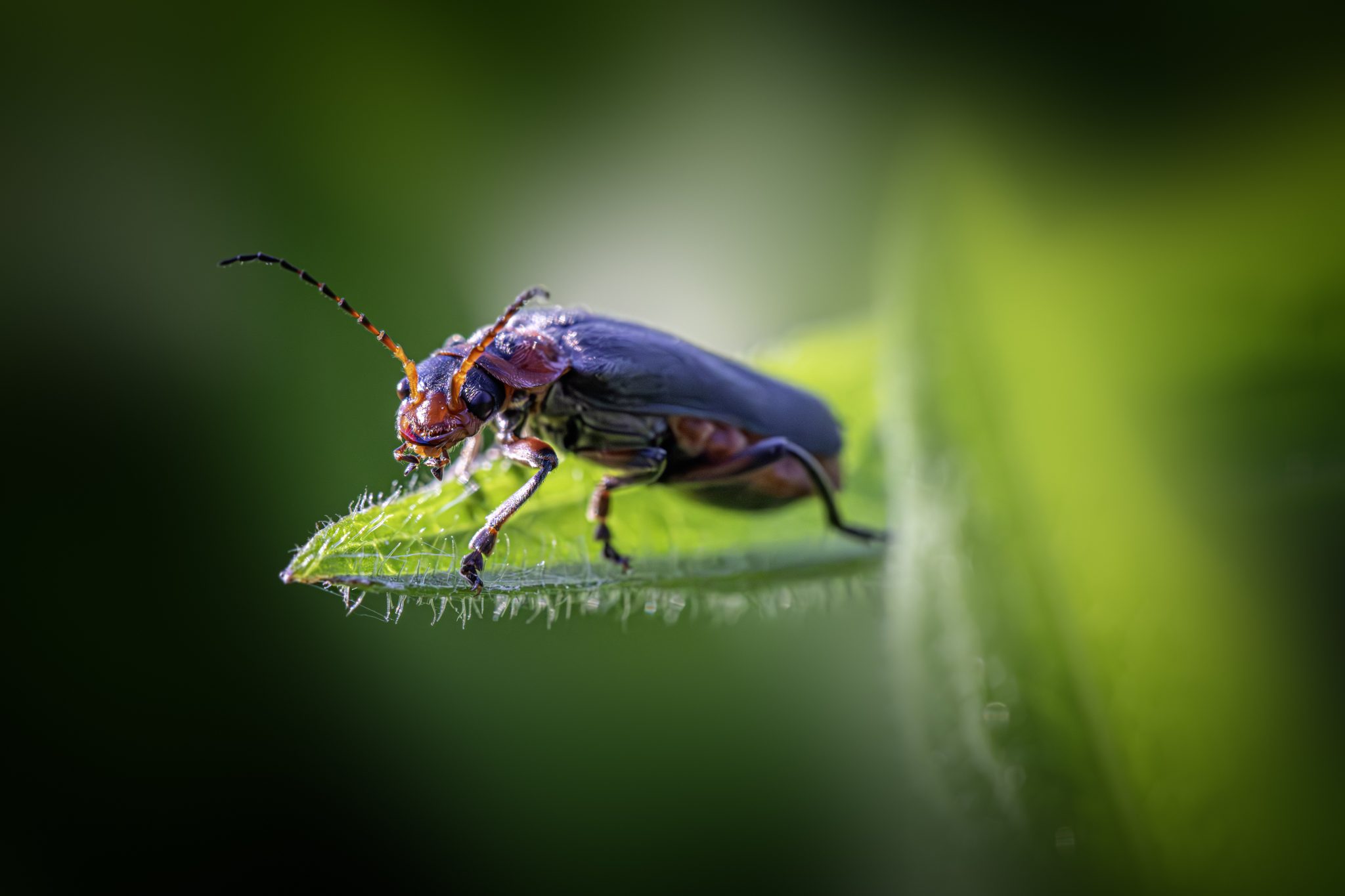Here’s a detailed field overview of the Rustic Sailor Beetle (Cantharis rustica) — one of Europe’s most frequently encountered soldier beetles. 🪲
🪲 Rustic Sailor Beetle (Cantharis rustica)
Scientific name: Cantharis rustica Fallén, 1807
Common names: Rustic Sailor Beetle, Rustic Soldier Beetle
Family: Cantharidae (Soldier Beetles)
Genus: Cantharis
🌍 General Overview
The Rustic Sailor Beetle is a medium-sized, soft-bodied predatory beetle widespread throughout Europe.
It is a common sight on meadows, hedgerows, and woodland edges in late spring and summer, where adults actively hunt small insects and visit flowers for nectar and pollen.
The species is one of the most recognizable soldier beetles, named for its “rustic” dark-red and black coloration.
🧬 Identification
| Feature | Description |
|---|---|
| Length: | 9–12 mm |
| Coloration: | Pronotum (neck shield) and elytra black, sometimes with dark reddish markings; head and legs orange to reddish-brown |
| Antennae: | Long and slender, blackish |
| Wings (elytra): | Soft and flexible, typical of Cantharids |
| Body shape: | Elongated, slightly flattened, with a leathery appearance |
| Sexes: | Similar; males slightly smaller |
🆔 Key ID feature: The pronotum (the shield behind the head) is black with reddish edges, helping distinguish it from other Cantharis species such as C. nigricans or C. fusca.
🌿 Habitat
- Found in open grassy areas, woodland clearings, hedgerows, flower-rich meadows, and field margins.
- Prefers sunny, warm locations with tall vegetation.
- Often seen resting or hunting on flowers like umbellifers (Heracleum, Anthriscus) and buttercups (Ranunculus).
🕷️ Behavior and Ecology
- Flight period: May to July (peak in June).
- Activity: Diurnal — active during warm, sunny days.
- Flight: Slow and hovering, often between flower heads.
- Feeding: Adults are predatory, feeding on:
- Aphids
- Small flies
- Caterpillars
- Pollen and nectar (occasionally)
🐛 Life Cycle
| Stage | Description |
|---|---|
| Eggs: | Laid on or near the ground among vegetation. |
| Larvae: | Elongated, blackish with velvety texture; live in soil or leaf litter. Predatory on small invertebrates (snails, larvae, worms). |
| Overwintering: | As fully grown larva in soil. |
| Pupation: | Occurs in spring; adults emerge soon after. |
The larvae are active hunters and play a role in controlling pest populations in soil ecosystems.
🧭 Distribution
- Geographic range:
Widespread and common throughout most of Europe, from southern Scandinavia to the Mediterranean, and east into western Asia. - In Estonia: Common and widespread in meadows, gardens, and forest margins from May to July.
📉 Conservation Status
| Category | Details |
|---|---|
| IUCN Red List: | Not evaluated (common and stable) |
| National status (Europe): | Widespread and abundant |
| Main threats: | Habitat loss through agricultural intensification, pesticide use |
| Conservation: | Benefits from flower-rich habitats and reduced pesticide spraying |
🔍 Similar Species
| Species | Distinguishing features |
|---|---|
| Cantharis nigricans | Entirely black pronotum |
| Cantharis fusca | Larger (11–15 mm), with bright orange pronotum |
| Rhagonycha fulva (Common Red Soldier Beetle) | More orange overall, lacks dark elytra |
🪶 Interesting Facts
- Often called the “soldier beetle” because of the bright red and black “uniform” pattern.
- Though harmless to humans, it is an important garden ally, consuming aphids and small pest insects.
- Adults are excellent flyers and frequently found on hogweed and cow parsley blooms.
- Part of the pollinator community, transferring pollen while hunting prey.
📊 Summary Table
| Trait | Description |
|---|---|
| Scientific name | Cantharis rustica |
| Common name | Rustic Sailor Beetle |
| Family | Cantharidae |
| Length | 9–12 mm |
| Color | Black and reddish-brown |
| Habitat | Meadows, hedgerows, woodland edges |
| Flight period | May–July |
| Diet (adult) | Small insects, aphids, pollen, nectar |
| Diet (larva) | Soil invertebrates |
| Distribution | Throughout Europe |
| Status | Common and stable |
Views: 200
Subscribe to the newsletter:
